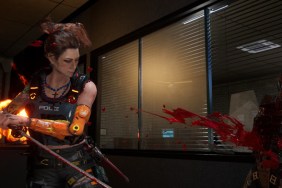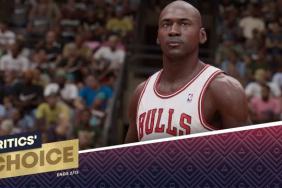Crossover fighting games are a time-honored tradition, especially when it comes to various series out of Japan. Bandai Namco Entertainment has a long history pitting the various heroes and villains of the Shonen Jump manga level against each other, and there’s a stable of developers it often rotates through. Jump Force is the latest effort in that line, this time from Spike…
-
Cool roster, with some characters you don't see as often
-
Super attacks are exciting, well-animated, and impactful
-
Pseudo-realistic style is ugly, especially in cutscenes
-
Speaking of cutscenes, production values outside of combat are a wreck
-
Poor, stuttery performance, even during battle
-
Muddled mechanics and poor visibility due to excessive motion blur





